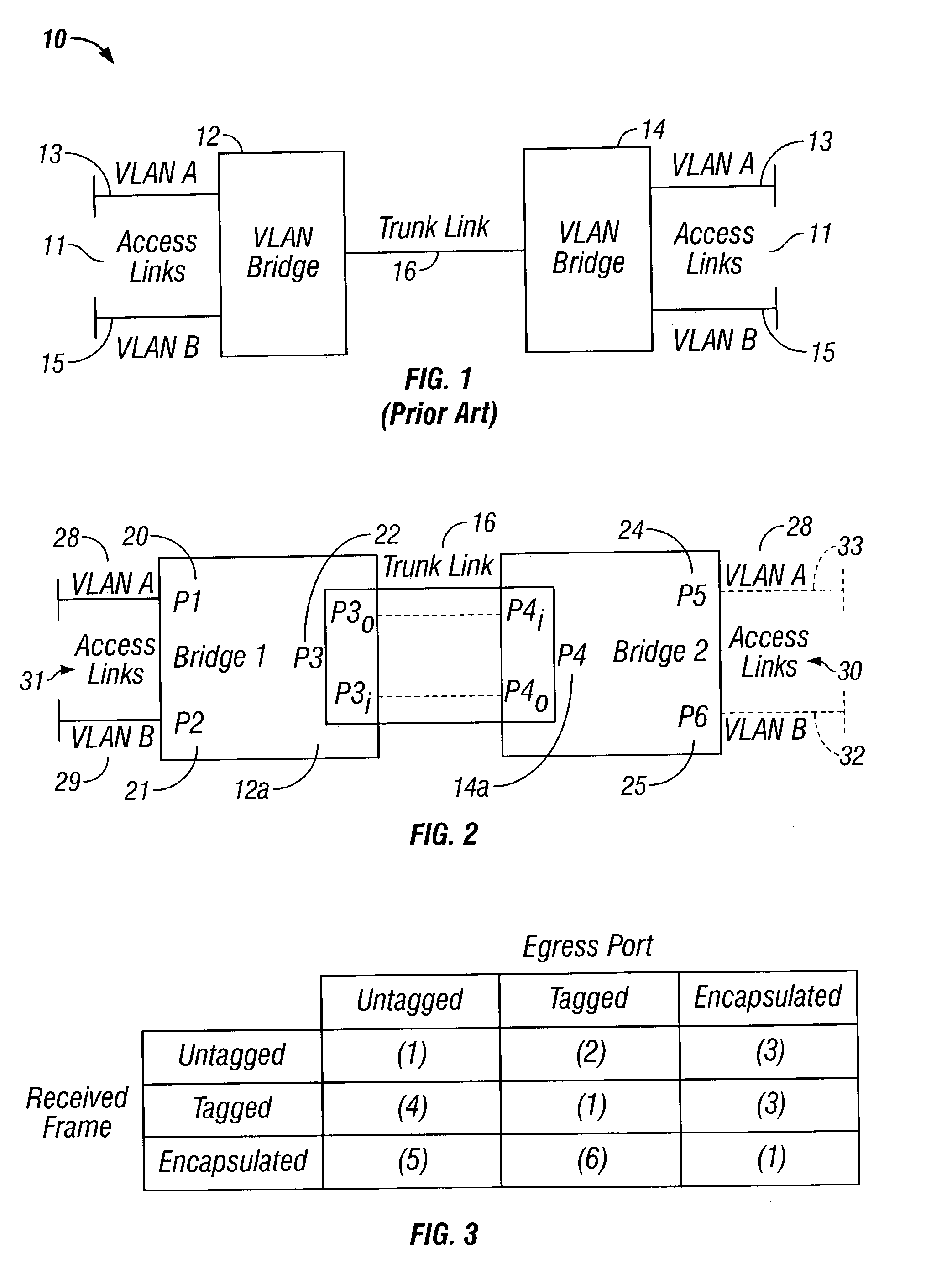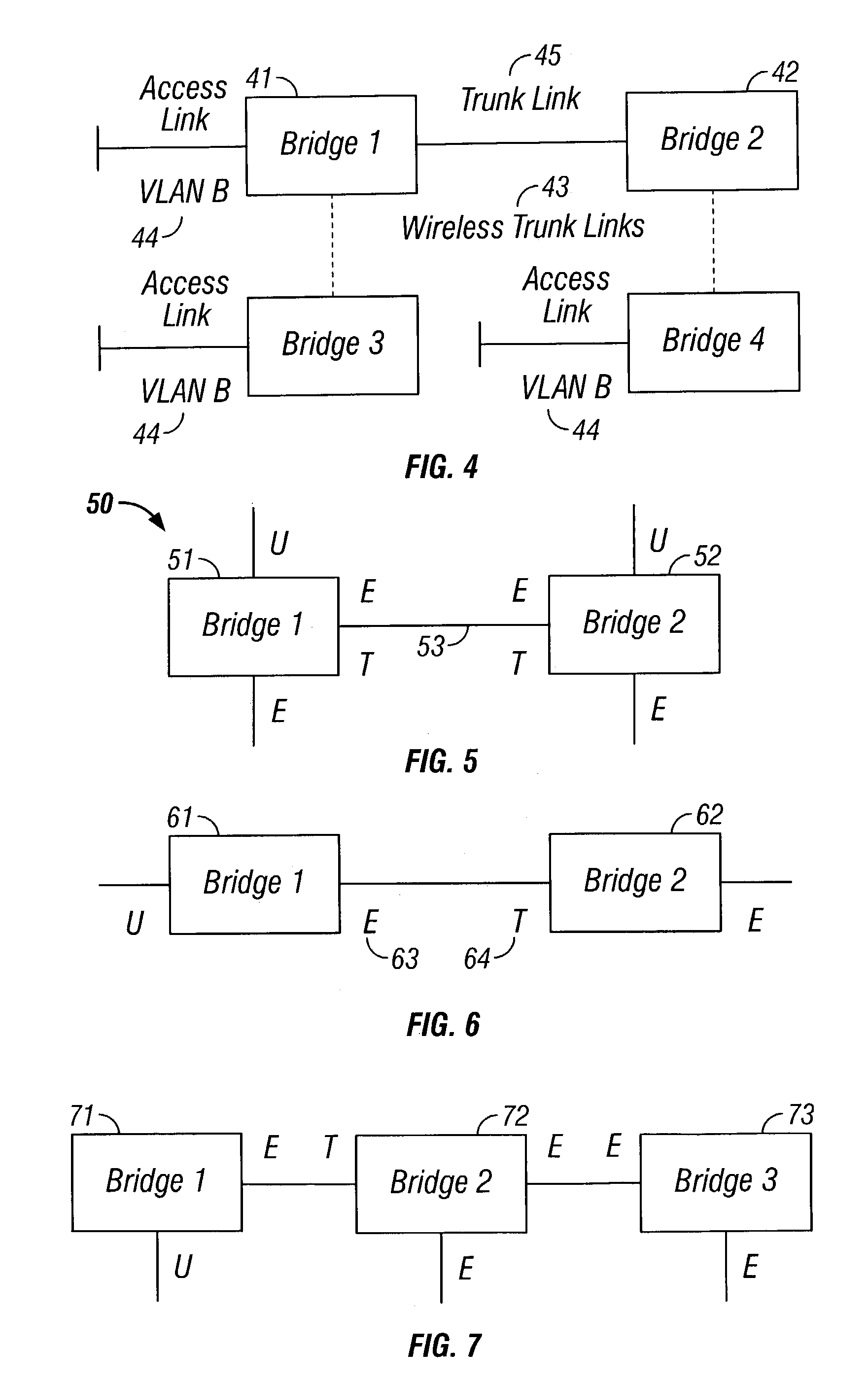Bridged cryptographic VLAN
- Summary
- Abstract
- Description
- Claims
- Application Information
AI Technical Summary
Benefits of technology
Problems solved by technology
Method used
Image
Examples
example 1
[0066]Consider bridging a single VLAN. Each access port therefore is assumed to belong to this VLAN. Thus, VLAN labeling of ports is omitted in the examples. Instead, the outbound trunk ports are labeled with LAN segment types, i.e. T (tagged), U (untagged), and E (encapsulated). If an outbound port is labeled with U, for example, then the port belongs to the untagged set of the VLAN.
[0067]Initially, every access port is labeled according to the kind of set to which the port belongs for the VLAN. Trunk ports are initially unlabeled. It is the job of TPP to infer labels for them. FIG. 5 shows a bridging of a VLAN 50 where two bridges 51, 52 are connected by a trunk 53. Each bridge has two access ports. Because each bridge has both untagged and encapsulated access ports, TPP infers that both outbound ports of the trunk belong to the tagged and encapsulated sets of the VLAN. Each inbound port also belongs to these sets.
[0068]Each outbound port is a member of the tagged set per rule TPP...
example 2
[0069]In FIG. 6, Bridge 1 (61) has an untagged access port and Bridge 2 (62) has an encapsulated access port. Therefore, the outbound port 63 of Bridge 1 is a member of the encapsulated set per rule TPP-E (a) whereas the outbound port 64 of Bridge 2 is a member of the tagged set per rule TPP-T (a).
example 3
[0070]FIG. 7 illustrates a purely encapsulated trunk link. All frames over the link are encapsulated, however, no encryption is done at Bridges 2 or 3.
[0071]FIG. 8 shows the TPP message exchange between Bridges 1 (71), 2 (72), and 3 (73) when Bridge 1 (71) of FIG. 7 initiates an announce frame for the VLAN, which we assume for the example is named “B”.
PUM
 Login to View More
Login to View More Abstract
Description
Claims
Application Information
 Login to View More
Login to View More - R&D
- Intellectual Property
- Life Sciences
- Materials
- Tech Scout
- Unparalleled Data Quality
- Higher Quality Content
- 60% Fewer Hallucinations
Browse by: Latest US Patents, China's latest patents, Technical Efficacy Thesaurus, Application Domain, Technology Topic, Popular Technical Reports.
© 2025 PatSnap. All rights reserved.Legal|Privacy policy|Modern Slavery Act Transparency Statement|Sitemap|About US| Contact US: help@patsnap.com



